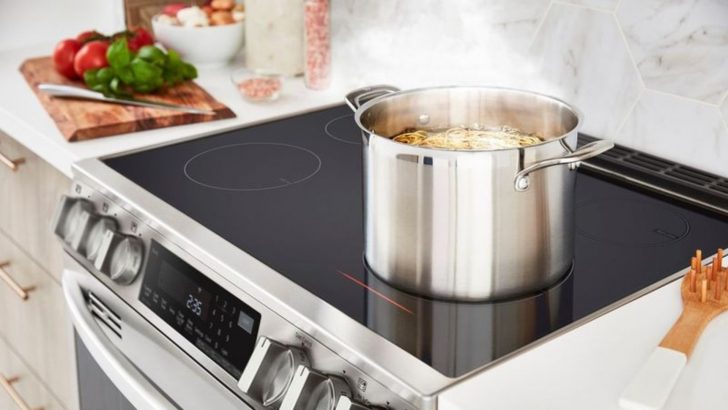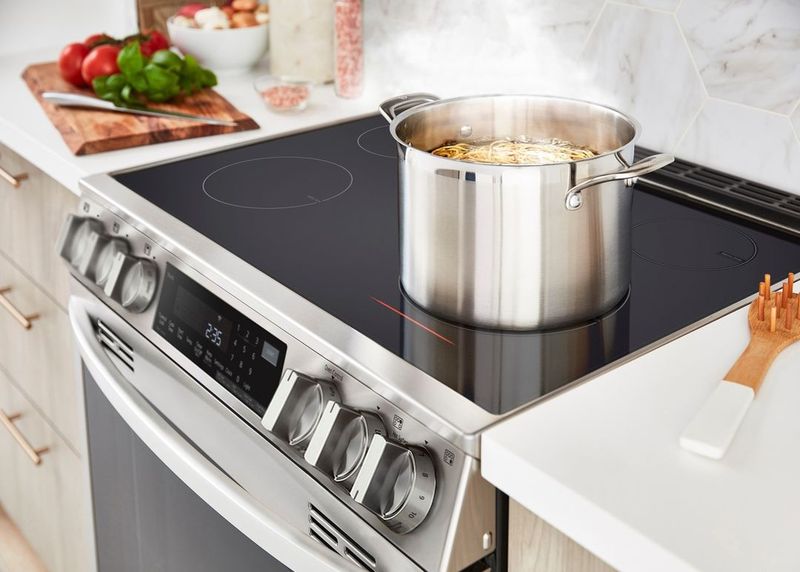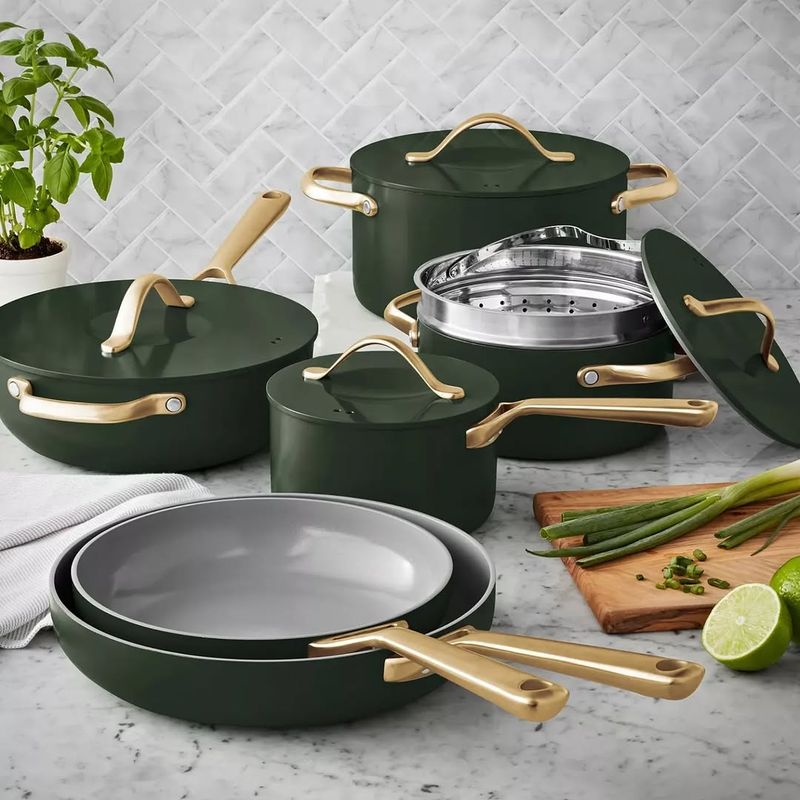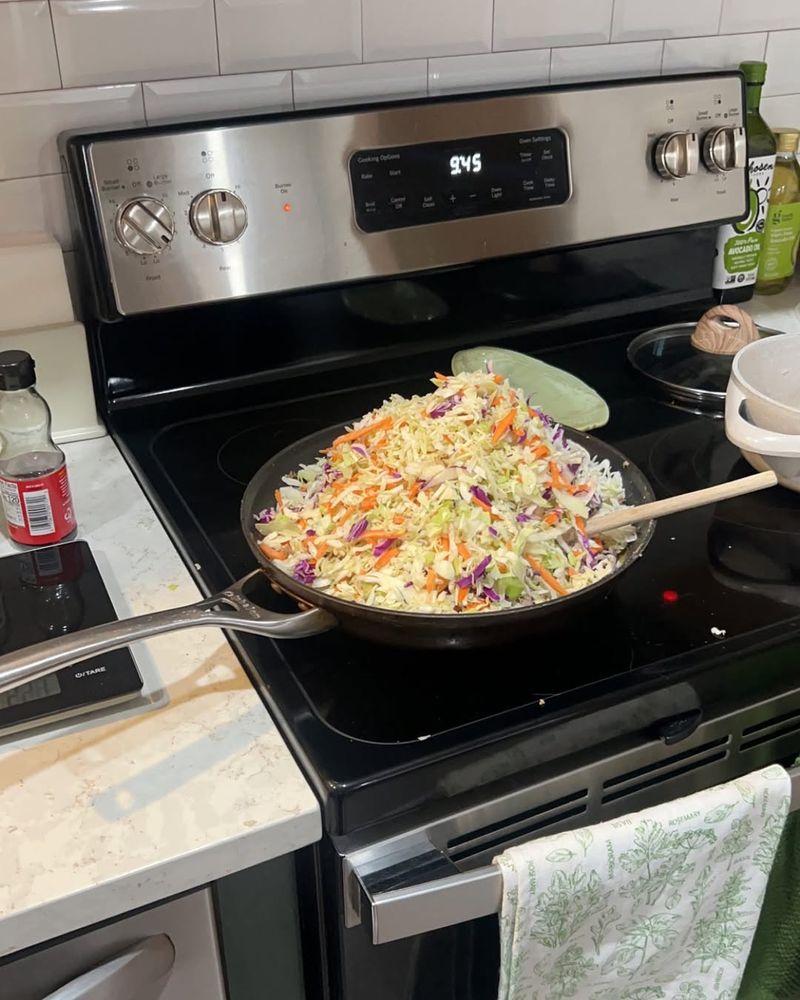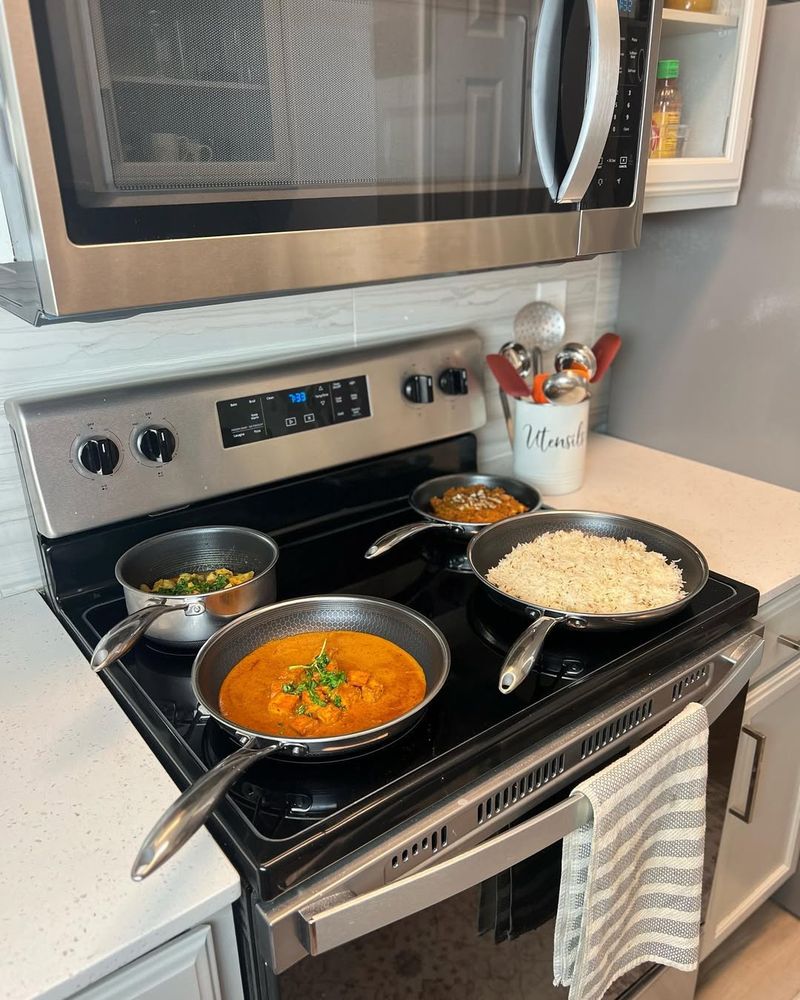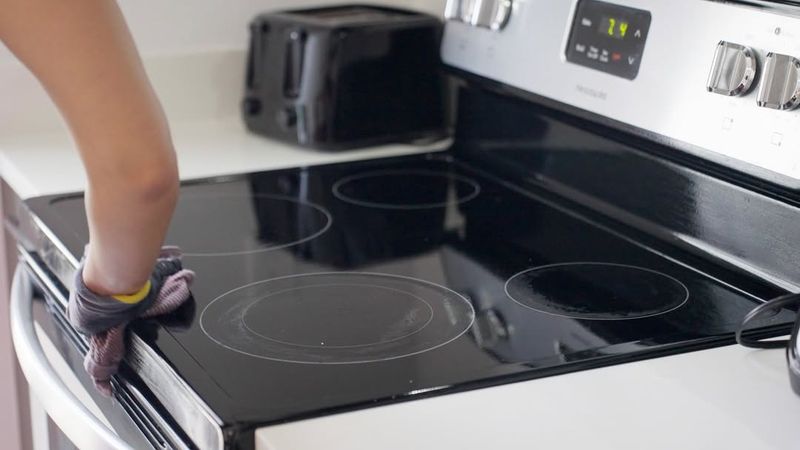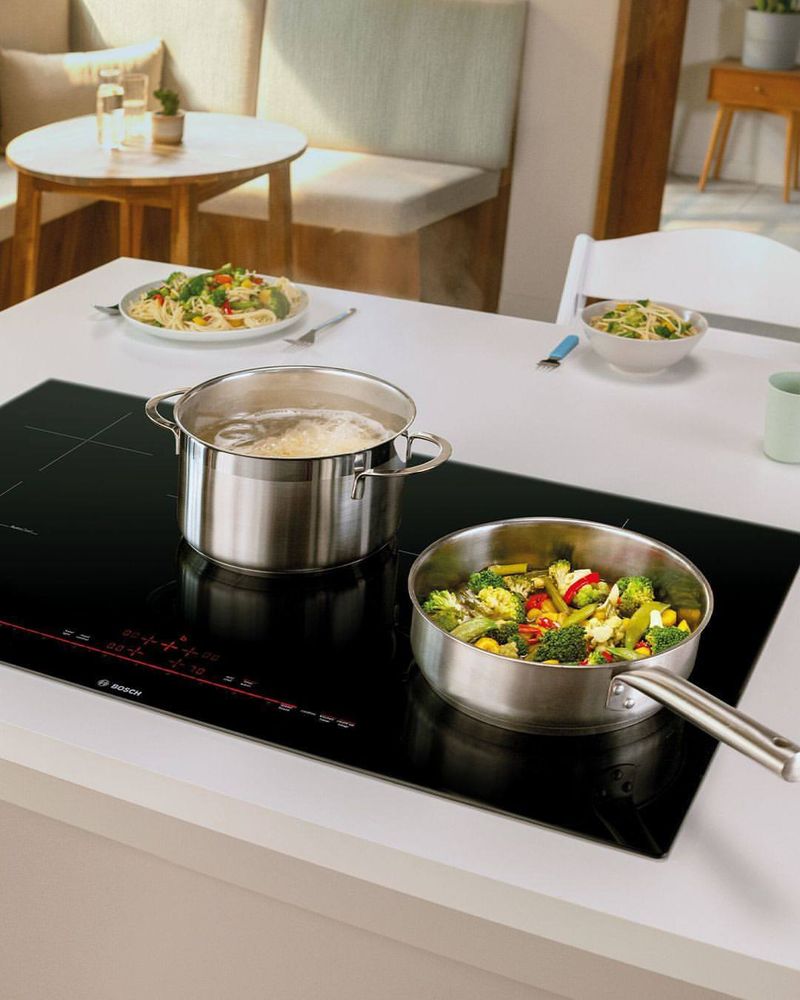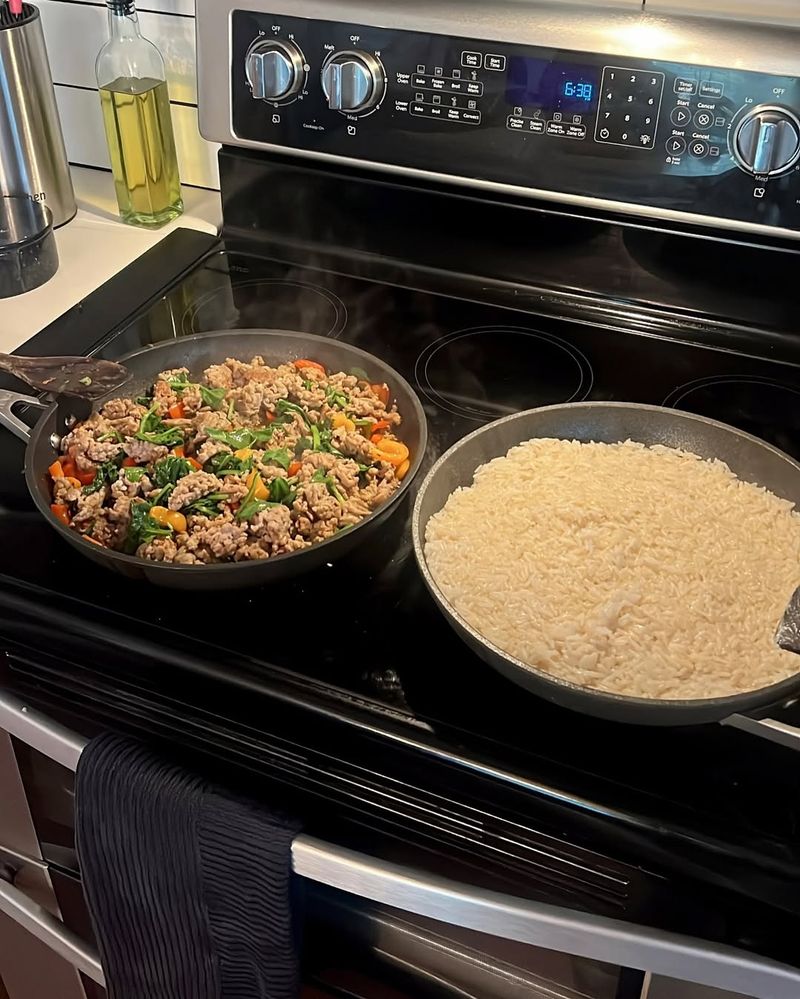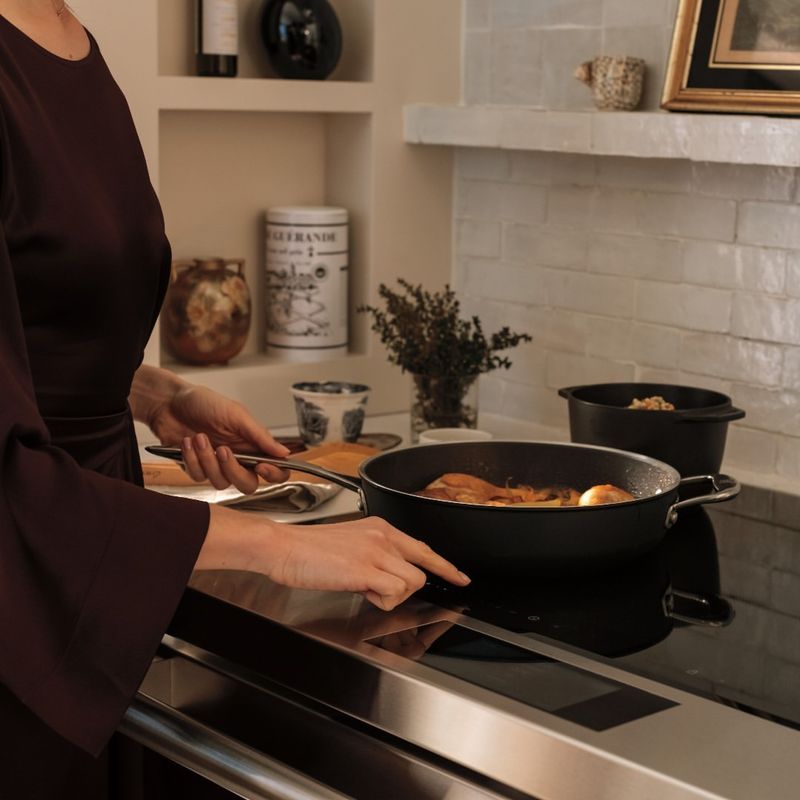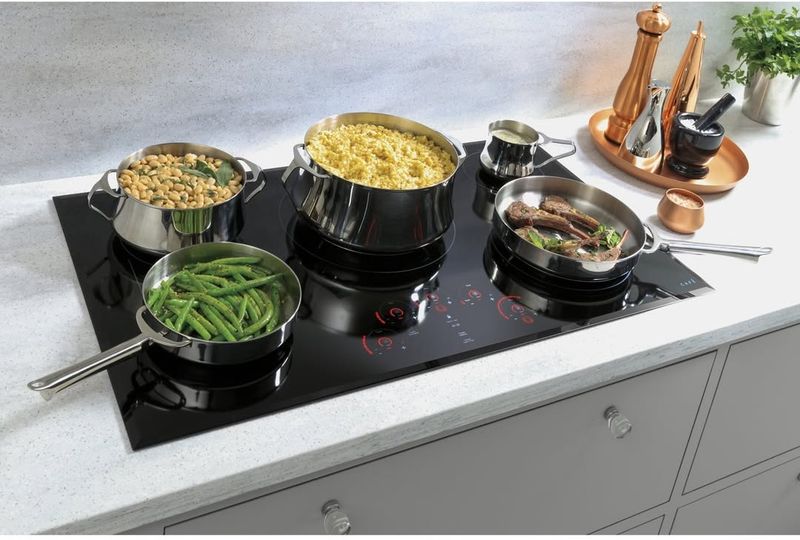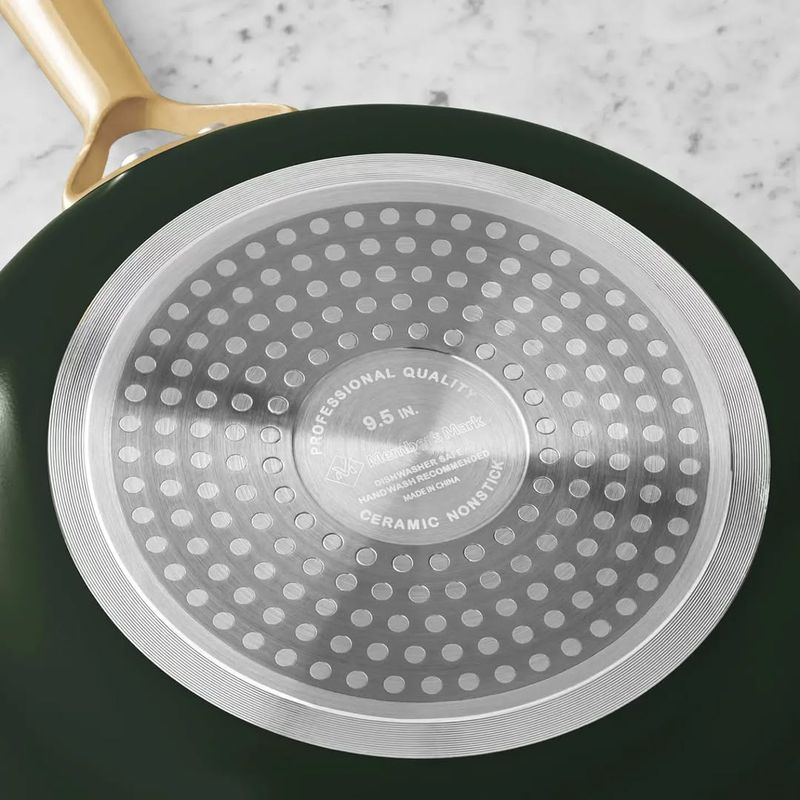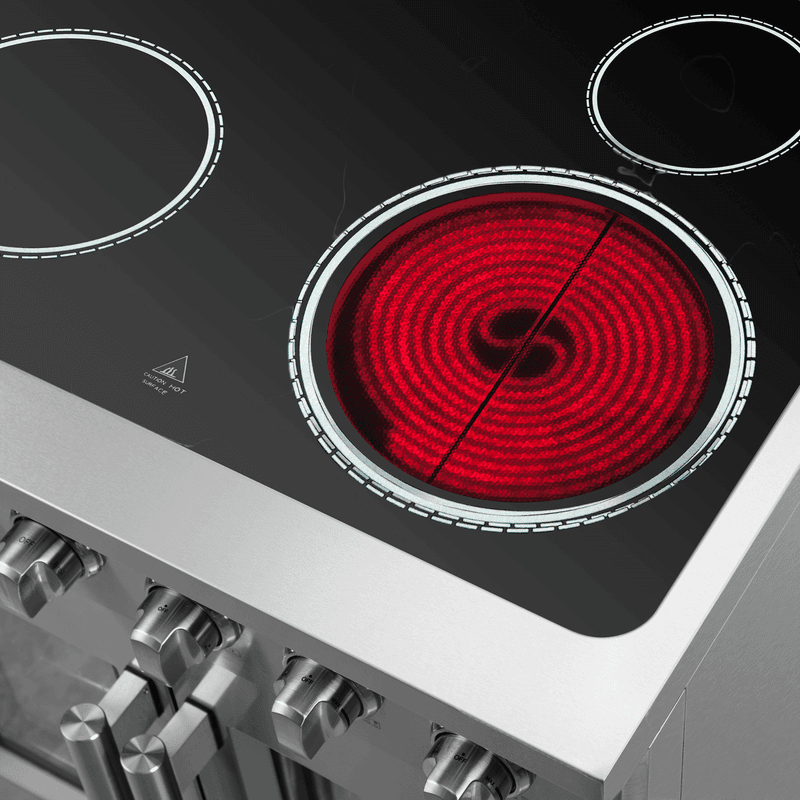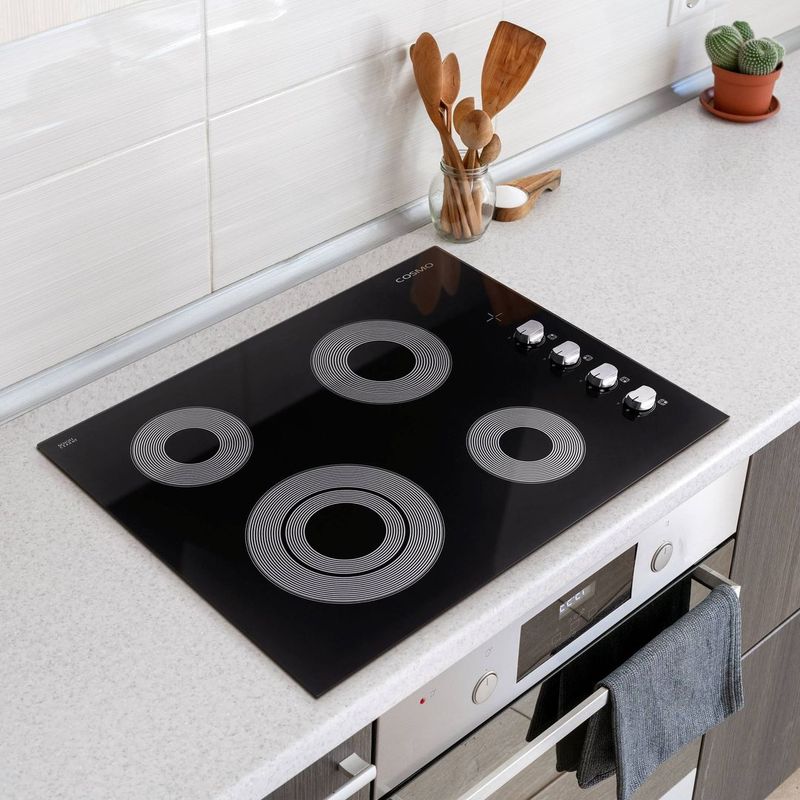Cooking on an electric stove top can be a delightful experience, yet these stoves often come with their own set of quirks. It’s fascinating to see how such a modern convenience can lead to unexpected challenges in the kitchen.
As we navigate through the nuances of electric cooking, you might find yourself nodding along to some of these common mishaps. Read on to uncover these twelve stumbling blocks and become a master of your electric stove.
1. Not Allowing Pans to Preheat
Many overlook the importance of preheating pans on an electric stove. Unlike gas stoves, electric versions take longer to reach the desired temperature. Hence, it is essential to give your pan enough time to heat up to ensure even cooking.
If you throw food in too soon, you risk unevenly cooked meals. Allowing time for proper preheating can make all the difference. Make sure to wait for the right sizzle to start cooking, and you’ll find your dishes turning out perfectly cooked.
2. Using the Wrong Cookware
Selecting the right cookware is crucial for electric stoves. Though it might seem trivial, cookware with flat bottoms ensures better heat distribution. If your pots and pans have warped bottoms, they may cause uneven cooking.
Hence, investing in quality, flat-bottomed cookware can improve your cooking experience greatly. Where possible, use materials like stainless steel or cast iron. These materials are excellent for consistent heating, helping you achieve more delicious results every time you cook.
3. Overcrowding the Pan
Crowding a pan can lead to disappointing results. If too many ingredients are added at once, this can lower the pan’s temperature, causing food to steam rather than brown. Where this happens, you lose the desired texture and flavor. To avoid this, cook in batches or use a larger pan if necessary.
By giving each piece of food enough space, you allow for proper caramelization, enhancing both taste and appearance. Hence, patience in spacing pays off in culinary success.
4. Ignoring Residual Heat
The concept of residual heat often slips the mind when using electric stoves. How often have you turned off the stove, only to realize it’s still piping hot? This retained heat can continue cooking your food longer than intended. Therefore, it’s wise to adjust cooking times accordingly.
When nearing the end of cooking, consider turning off the heat a few minutes early. This method allows you to harness the remaining heat, perfectly finishing your dish without overcooking it.
5. Neglecting to Clean Spills Promptly
Spills are inevitable, but prompt cleaning is essential. Left unattended, spills can burn onto the stove, making future cleaning a nightmare. Where possible, clean spills immediately to prevent stubborn stains.
This not only keeps your kitchen looking tidy but also maintains the stove’s efficiency. Regular cleaning also prolongs the lifespan of the stove. Hence, a quick wipe down after cooking is a small effort that reaps significant benefits, keeping your cooking environment pristine.
6. Misjudging Cooking Times
Cooking with electricity may alter your usual timings. Electric stoves heat differently, leading to potential misjudgments in cooking durations. If you rely solely on your past experiences with gas stoves, you might end up with undercooked or overcooked meals.
It’s crucial to familiarize yourself with your stove’s heating patterns. Hence, using timers and being vigilant can help you adjust to these differences. This attention ensures precision, ultimately improving the quality of your culinary creations.
7. Using High Heat Constantly
Constant high heat is a common misstep. Cooking everything at maximum temperature can lead to burned exteriors and raw interiors. If you adjust the heat appropriately, you can achieve more balanced and tasty results.
Instead, start at a higher heat to sear meats or bring liquids to a boil, then reduce it to continue cooking. This method allows for thorough cooking without burning. Thus, mastering heat control can enhance both the flavor and texture of your meals.
8. Forgetting to Adjust the Flame
Adjusting the flame is a misnomer on electric stoves, but controlling heat levels is crucial. Electric stoves require adjustments for different cooking stages. If you leave the setting unchanged, you risk overcooking.
Hence, it is vital to monitor and modify the heat as needed. By understanding your stove’s response, you can better manage cooking temperatures. Thus, practice makes perfect when learning to control heat, leading to more successful and flavorful dishes.
9. Skipping the Instruction Manual
Reading the manual seems tedious yet skipping it can lead to inefficiencies. Each stove has unique features and controls that, if understood, enhance cooking performance. Taking the time to understand your stove’s specifics is beneficial.
Therefore, familiarizing yourself with its functions can prevent future frustrations and mistakes. This knowledge empowers you to make the most of your electric stove, optimizing your cooking experience.
10. Using Non-Compatible Cookware
Not all cookware is suited for electric stoves. If you choose non-compatible materials like glass or stone, they might not heat efficiently. Where possible, opt for cookware specifically designed for electric stoves.
The right materials ensure even heating and better cooking outcomes. Furthermore, non-compatible cookware can scratch or damage the stovetop, reducing its efficiency. Thus, investing in the right pots and pans is a smart choice, extending the life of your stove and enhancing your culinary results.
11. Not Calibrating the Stove
Calibrating your electric stove ensures optimal performance. If your stove isn’t calibrated correctly, it might lead to inaccurate temperature settings. This miscalibration affects cooking outcomes, often leading to unsatisfactory dishes.
Periodic checks and calibrations can improve efficiency. Consulting a professional to ensure your stove works as intended can save you from future hassles. Thus, attention to maintenance not only extends the life of your appliance but also enhances your cooking satisfaction.
12. Overlooking Safety Precautions
Safety should always be a priority in the kitchen. Electric stoves present specific risks if overlooked. How often do you check for nearby flammable items or ensure the stove is off when not in use? Ensuring no cloths or paper are near the stove prevents potential fires.
It’s also important to teach children about stove safety. By instilling good habits, you create a safer cooking environment. Hence, attention to safety details is crucial in maintaining a secure kitchen.

